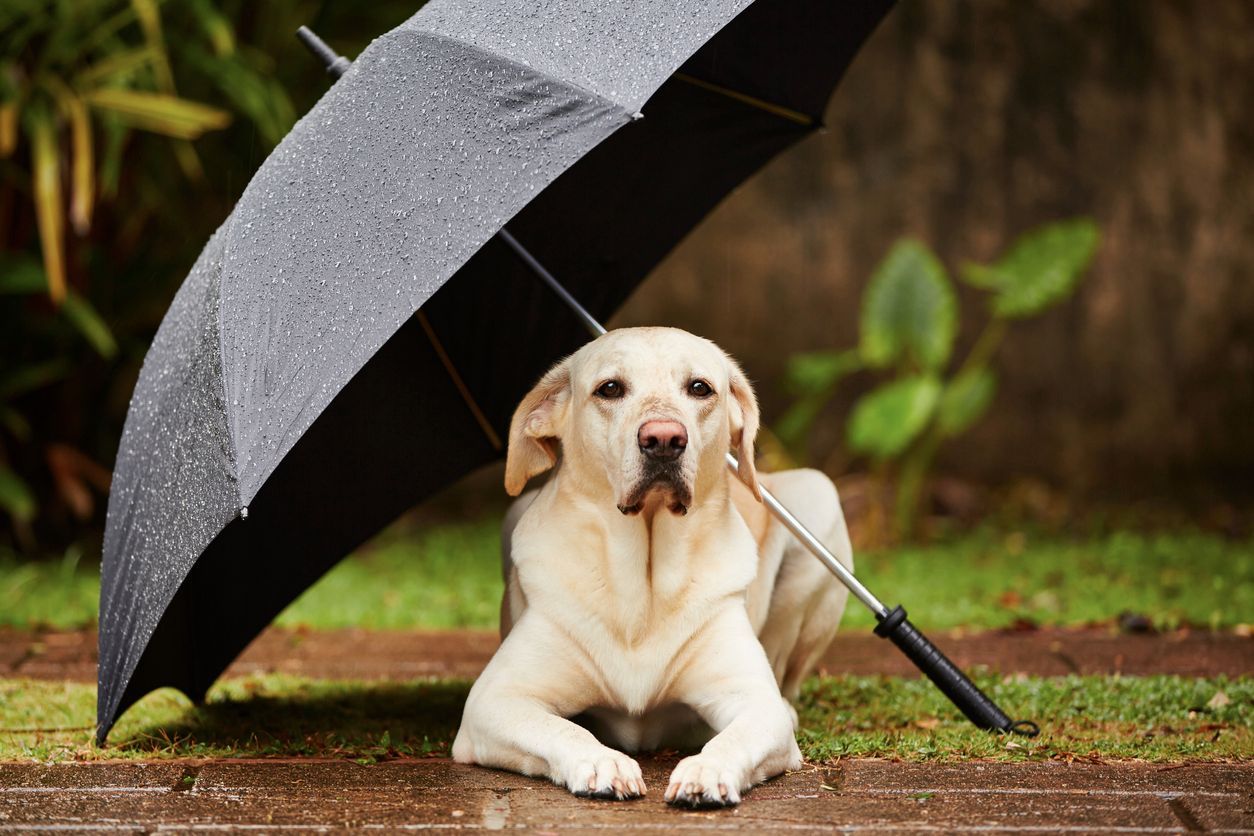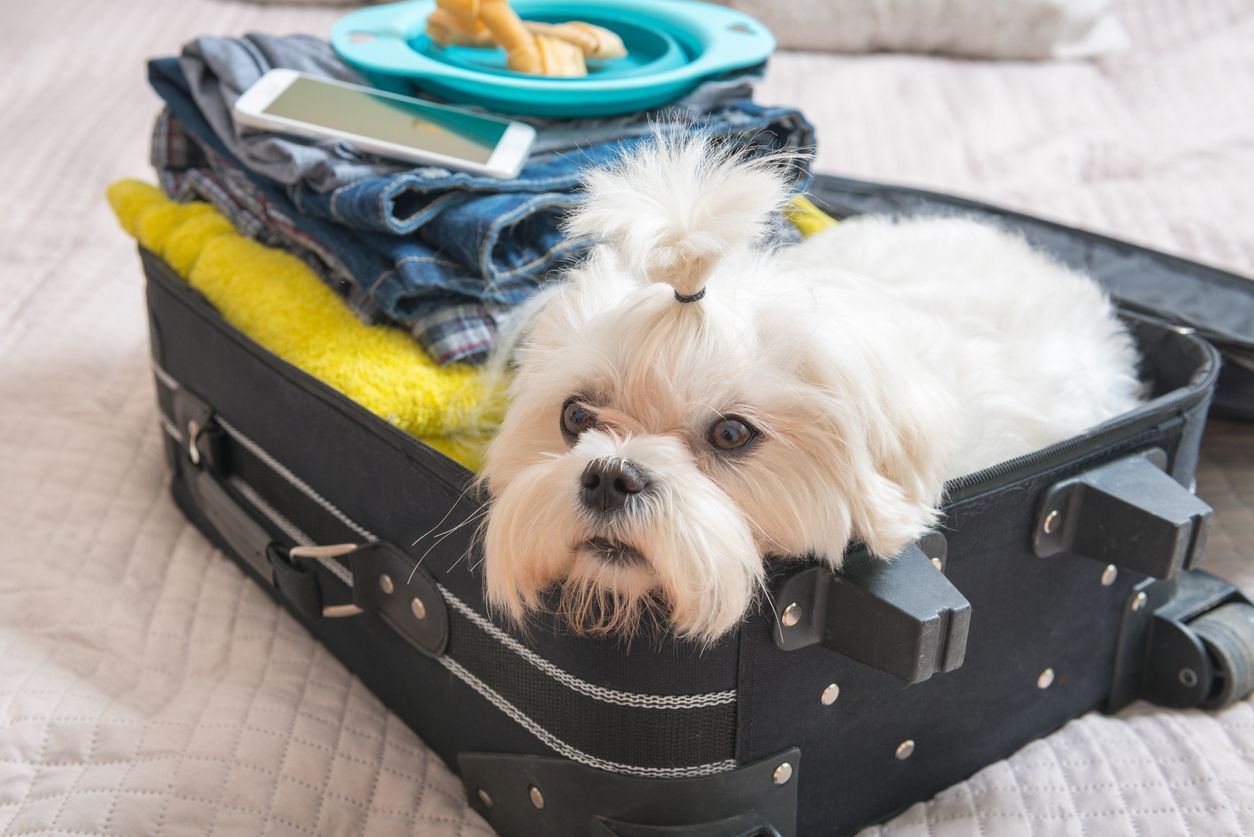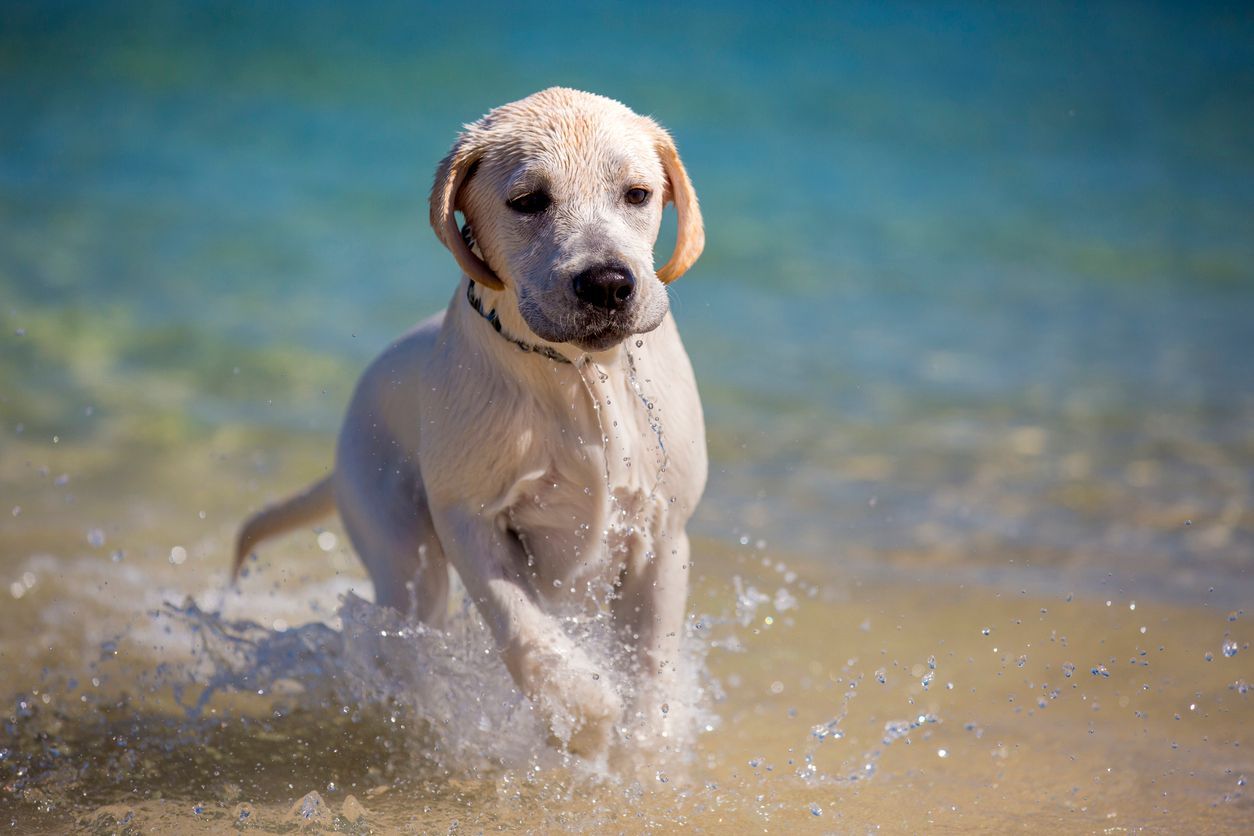Weather the storm: A guide to protecting your pets in harsh weather

Living in warmer climates offers numerous benefits: sandy beaches, endless sunshine, and warm weather year-round. However, the flip side of this paradise is the inevitable storm season, particularly intense from late summer through fall. These storms can be more than an inconvenience; they can be distressing for pets. To help you best navigate inclement weather in these regions, we’ve put together a guide on how to best prepare for and support your two- or four-legged pets throughout stress-inducing weather.
Tip #1: Consider Your Pet’s History with Inclement Weather
Whether or not your pet has experienced severe inclement weather previously will determine how bothered they are during a torrential downpour. Some pups will snooze throughout even the most significant rain, whereas others may pant or whine. How has your pet reacted previously? How long have you owned this pet? Did you invite this pet into your family as a puppy, or is he a rescue?
Even if your pet is unbothered by inclement weather, take steps to be prepared for the worst-case scenario. But if you are unfamiliar with your pet’s history and/or have only shared your home with them for a brief period of time, take extra precautions in advance of inclement weather (more details on those precautions below).
Tip #2: Crate Train Your Pet
One of the most impactful ways to ensure your pet's comfort and safety is by familiarizing them with a crate. This applies to all pets and isn’t just for dogs. A crate isn't merely a temporary containment tool, and it definitely isn’t for punishment. Ideally, a crate becomes your pet's sanctuary during stressful times. By investing time and energy into crate training from the time you bring them home, you're essentially providing your pet with a security blanket they can rely on, no matter the circumstances.
Teaching your pet that a crate is a safe, calming, and comfortable space can make all the difference, especially during evacuations when pets might not be able to shelter with their humans. Think of it as giving them a safe haven amidst chaos, a familiar spot where they can find solace and security.
So, whether it's thunderstorms, wildfires, or other emergencies looming on the horizon, take the proactive step of crate training your pet. It's a small investment that could yield immense dividends in your pet's well-being during trying times.
Tip #3: Create a Calming Environment in Your Home
Many pets will want to hide away during an inclement weather event. Try creating a warm, cozy space in an enclosed area to decrease their stress and increase their comfort. A few blankets under a bed or in a closet - or even in their crate - will do. Do your best to minimize how much of a storm your pet can see or hear by closing blinds and playing loud music. Pheromones such as DAP for dogs and Feliway for cats may provide some calming benefit. The needs for birds, reptiles, and other pets can vary, so consider what makes them most comfortable.
Tip #4: Keep them Occupied
Distractions can be just as useful for pets as they are for children during unsettling times. Giving your pet a job to keep their mind off of an inclement weather event is a great way to calm their nerves. Puzzle toys, agility and weighted vests can be helpful tools in these instances.
Tip #5: Secure Important Pet Documents
In the event of an emergency, having quick access to your pet’s vital records can be crucial. Ensure you have a waterproof and easily accessible folder containing your pet’s vaccination records, medical history, identification information (such as microchip number or registration papers), contact information for yourself and a trusted friend or relative, emergency phone numbers including the closest emergency vet, and any specific care instructions like dietary restrictions or feeding schedules. If your pet has a microchip, make sure the contact information associated with it is up to date so someone scanning your pet will be able to reach you. [See our checklist below]
Tip #6: Talk to Your Veterinarian
Sometimes our pets need a little bit more support, and this is when medication can be really helpful. Speak to your veterinarian if your pet is still distressed during inclement weather despite implementing the tips and tricks listed above. A Vetster vet will listen to your concerns, take your pet’s history, and evaluate your pet through a video appointment - all from the comfort of home. Since wait times for appointments are often short, the vet may even be able to see your pet while they’re exhibiting worrisome behavior. Then they can provide the best next steps for helping your pet. A Vetster vet can help you navigate the assortment of over-the-counter products that claim to help pets stay calm, including letting you know which ones are actually proven to work, and even provide prescription medications in some circumstances, if appropriate.
We hope this guide has been helpful for you. Vetster is committed to supporting you and your pet through challenging weather. Our platform is designed to offer quick, effective care for your pets during these stressful times.
Don’t wait for the next storm to protect your pet. Download the emergency and contact checklist to keep all important information in one place.
Printable Emergency Check List + Contact List
As a responsible pet owner, it's crucial to be well-prepared for any situation, especially during seasons with unpredictable weather. To ensure your pet’s safety and comfort, we've compiled a comprehensive checklist that covers everything you need to have on hand. This checklist will help you organize essentials and plan ahead, minimizing stress for both you and your pet when the weather turns severe.




